#oneida community
Explore tagged Tumblr posts
Text

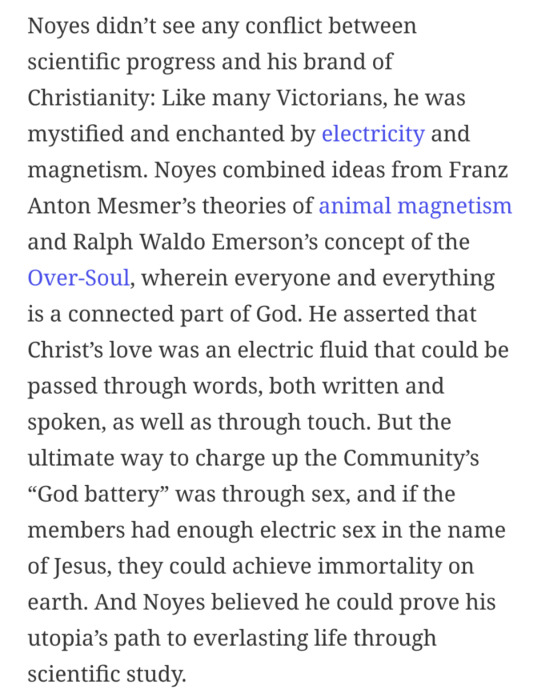

#❓#very long but interesting article if you are compelled by very niche historical communities#only the first half is this interesting though the rest is a lot about how it became capitalist which is less fun to me#i think the perspective of sermons being akin to sex is so fun#also “while noyes did not get laid at his first tent revival he did feel called to join the ministry and attended seminary”..............#average seminarian behavior. sorry#me#oneida community
79 notes
·
View notes
Text
no heaven or hell when you die, everyone is just herded into a room with a big scoreboard saying which person blasted the most Cum

#history memes#apush#us history#oneida community#dril#fuck it he was in it so I’m gonna tag#charles guiteau
12 notes
·
View notes
Text
Founded in 1848, and in operation for just over three decades, the Oneida Community was profoundly revolutionary for its time, paving the way for advances in women’s and workers’ rights. At the commune headquartered on the Oneida River in upstate New York, women cut their hair short, ditched the corset, and did the same work as the men. Everyone worked four to six hours a day, and no one accumulated any material possessions—not furniture, not fine clothing, and certainly not silverware.
Most scandalously, commune members engaged in a system of “complex marriage,” believing that loving, open sexual relationships could bring them closer to God. They believed the liquid electricity of Jesus Christ’s spirit flowed through words and touch, and that a chain of sexual intercourse would create a spiritual battery so charged with God’s energy that the community would transcend into immortality, creating heaven on earth.
0 notes
Text
one of the most surreal intersections of my research interests is running across a mention of the oneida community in an article on eunuchs communicating almost exactly the same anti-relationship sentiments i've found in 80s feminist magazines claiming coupled lesbians are inherently oppressive to single lesbians
#oneida community jumpscare#sroloc babbles#had a research tag but fuck if i remember it right now#eldritch knowledge
7 notes
·
View notes
Text
something moderately funny about studying religious communes in america and realizing that both our silverware and our stove were made by companies that were originally run by religious communes from the late 19th century
#.txt#oneida hasnt been a commune since the 1890s and amana since the 1930s i think but still#this is like finding out chiropractic is a religious thing all over again
0 notes
Text
Indigenous People's Day
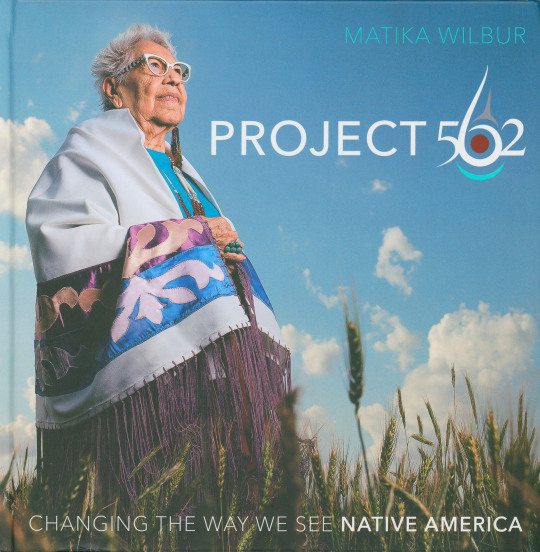
DR. HENRIETTA MANN Cheyenne
On this Indigenous Peoples' Day, we are featuring Matika Wilbur’s recent publication Project 562: Changing the Way We See Native America, published by Ten Speed Press in 2023. Wilbur (b. 1984) is a visual storyteller and member of the Swinomish and Tulalip peoples of coastal Washington. She holds a degree from the Brooks Institute of Photography alongside a teaching certificate that has shaped her style of educating through narrative portraits.
Project 562: Changing the Way We See Native America, a book born from a documentary project of the same name, resolves to share contemporary Native issues and culture. In 2012 Wilbur set out from Seattle to visit and photograph all 562 plus Native American sovereign territories in the United States.
Wilbur’s engagement with the communities she visited resulted in the creation of hundreds of dynamic portraits and documentation of conversations about “tribal sovereignty, self-determination, wellness, recovery from historical trauma, decolonization of the mind, and revitalization of culture.” She refers to her portraiture approach as “an indigenous photography method” that includes several hours and sometimes days of interaction with the participants, an exchange of energy and gifts, and asking sitters to choose their portrait location. The outcome is a stunning collection of Native narratives and portraits.
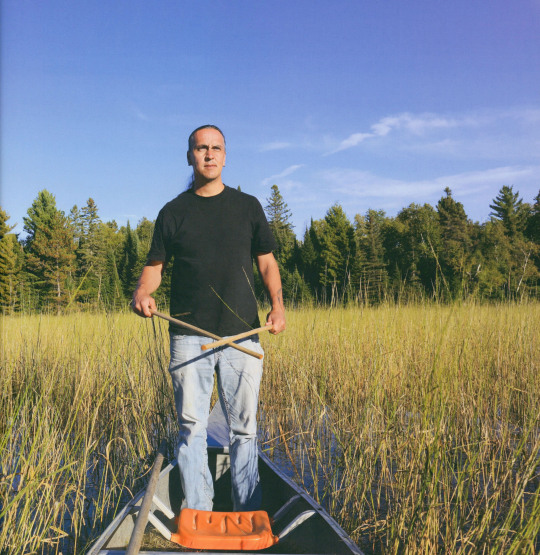
GREG BISKAKONE JOHNSON Lac Du Flambeau Band of Lake Superior Chippewa Indians
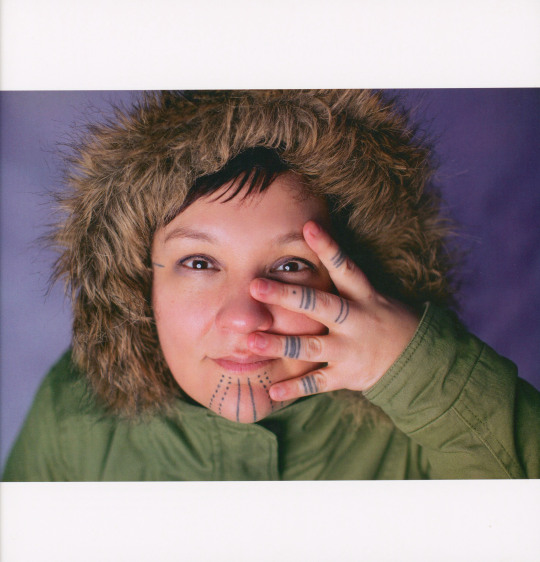
HOLLY MITITQUQ NORDLUM Iñupiaq
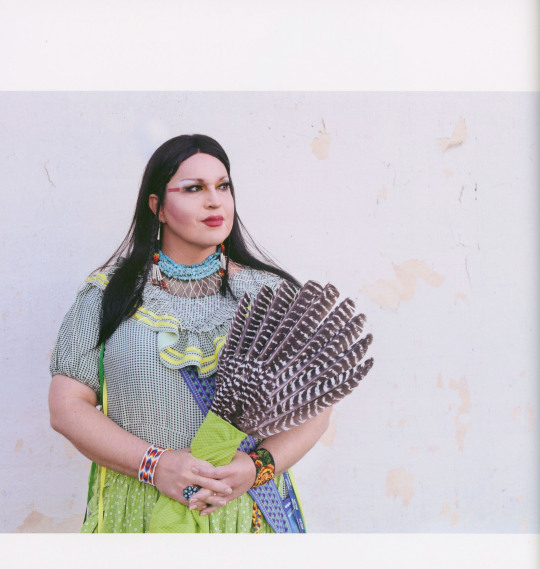
J. MIKO THOMAS Chickasaw Nation
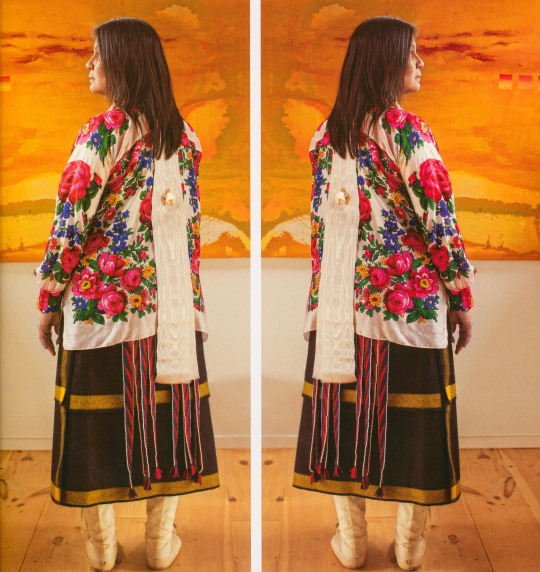
MOIRA REDCORN Osage, Caddo
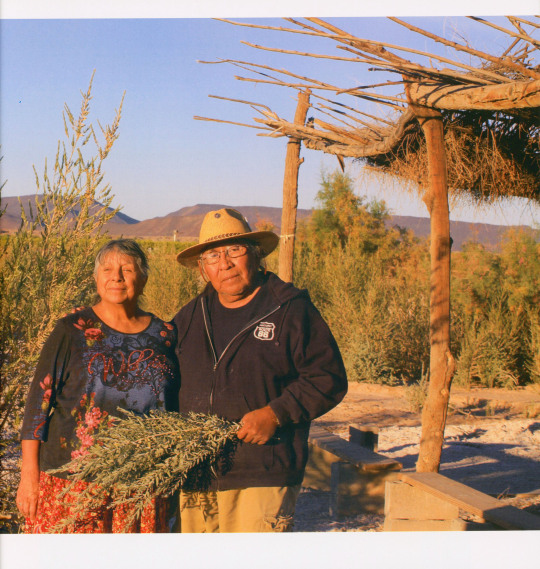
HELENA and PRESTON ARROW-WEED Taos Pueblo/Kwaatsaan, Kamia
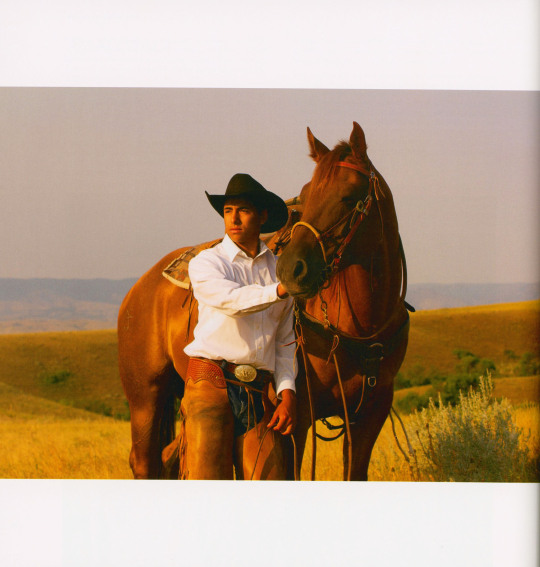
STEPHEN YELLOWTAIL Apsáalooke (Crow Nation)

LEI'OHU and LA'AKEA CHUN Kānaka Maoli
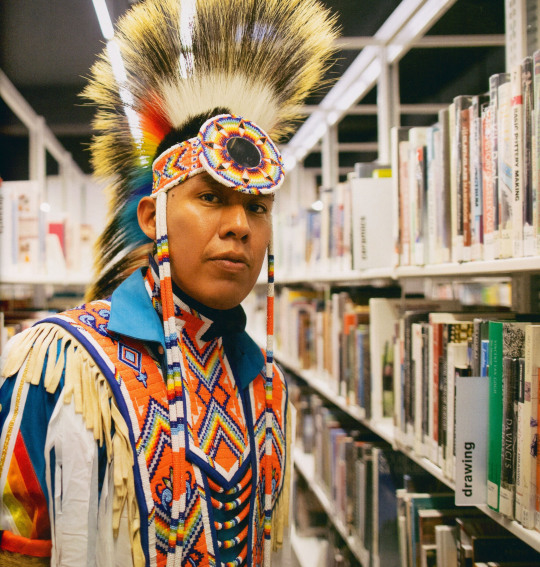
ORLANDO BEGAY Diné
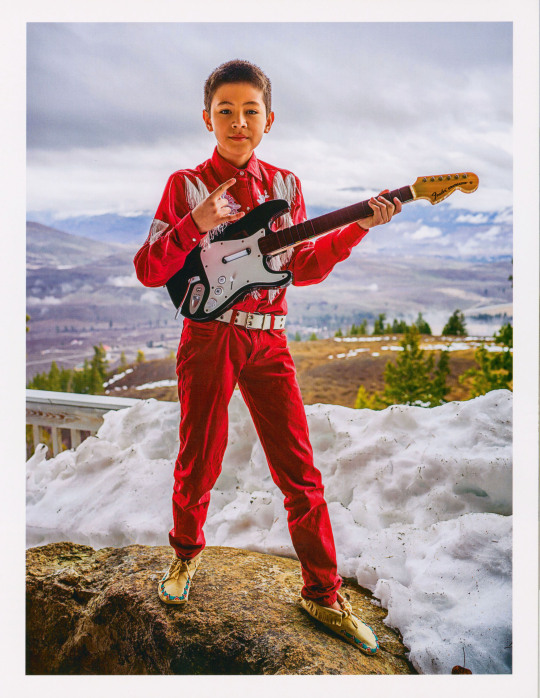
KALE NISSEN Colville Tribes

GRACE ROMERO PACHECO Santa Ynez Band of Chumash Indians

ISABELLA and ALYSSA KLAIN Diné
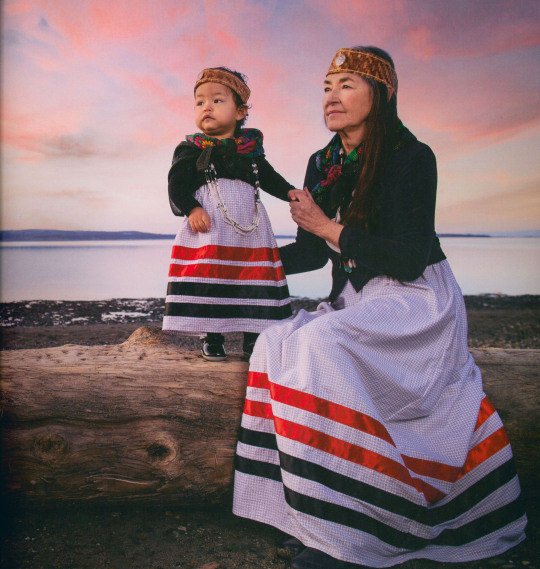
NANCY WILBUR Swinomish
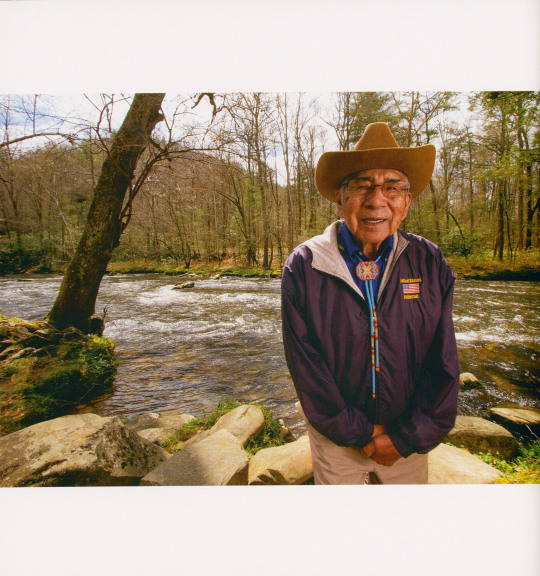
DR. JEREMIAH "JERRY" WOLFE Eastern Band of Cherokee Indians
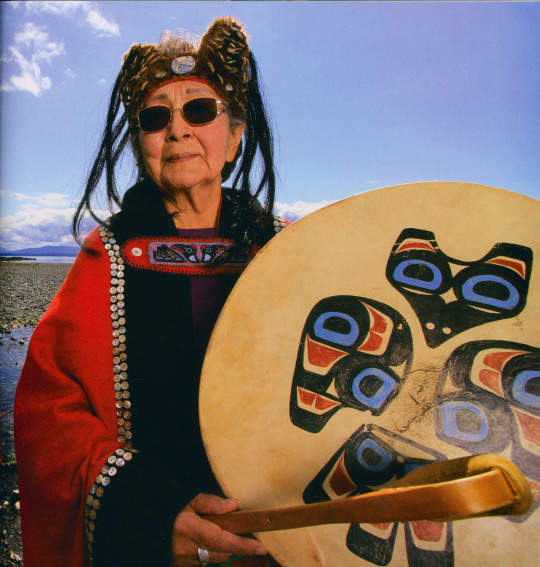
RUTH DEMMERT Tlingit
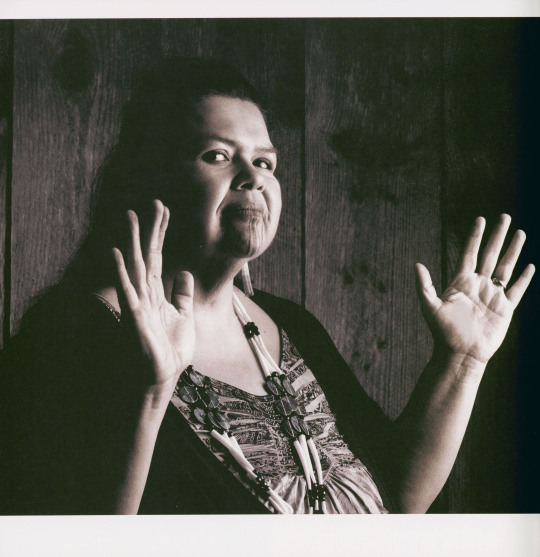
MARVA SII~XUUTESNA JONES Tolowa Dee-Ni' Nation, Yurok, Karuk, Wintu
Matika Wilbur will be speaking on UW-Milwaukee's campus Thursday, November 16 from 6-7p.m. in conjunction with her exhibition Seeds of Culture: The Portraits and Voices of Native American Women on view at the Union Art Gallery November 16 through December 15, 2023.
-Jenna, Special Collections Graduate Intern
We acknowledge that in Milwaukee we live and work on traditional Potawatomi, Ho-Chunk, and Menominee homelands along the southwest shores of Michigami, part of North America’s largest system of freshwater lakes, where the Milwaukee, Menominee, and Kinnickinnic rivers meet and the people of Wisconsin’s sovereign Anishinaabe, Ho-Chunk, Menominee, Oneida, and Mohican nations remain present.
#indigenous peoples' day#matika wilbur#project 562#Ten Speed Press#Native Americans#holidays#UWM Native American Literature Collecton
846 notes
·
View notes
Text

Clarence Coles Phillips (American, 1880-1927) • Community Plate for Oneida Silversmiths Ltd., Advertisement • 1924
#illustration#art#illustrator#artwork#advertisement illustration#clarence coles phillips#american illustrator#1920s american illustration
160 notes
·
View notes
Text
@radicarian said: There have been great blue heron laguz out there this whole time. No special song magic. Just shrimping
this is getting more shitposty/canon-divergent, but: it would be very funny if the whole time, the *Serenes* herons were the in-universe equivalent of the Oneida cult & were in fact just a weird subset of the heron population that intermarried a lot & had EXTREMELY strange religious customs, but they also produced very good silverware & that's how everyone else fell in love with them
the other heron laguz live in diffuse communities throughout the world & think the Serenes herons are frankly kinda creepy & so when there's all this outpouring of support for Serenes post-massacre they're sitting there like "hey. look. it sucks that that happened. i get it. but also, you realize we're not ALL dead, right, we are literally right here"
it would be extremely funny if "tellius-heron-laguz being strictly vegetarian" thing is some kind of lost-in-translation deal & actually the herons are totally fine with eating shellfish b/c they're not considered animals in the Serenes-taxonomy-of-life
tibarn's eyes bug out the first time they go someplace with decent seafood and reyson proceeds to immediately order & hork down a dozen oysters & when tibarn's like "uhhh can you eat that" reyson's like "what, oysters aren't vegan?"
28 notes
·
View notes
Text
Around 10 years ago, a linguist with experience in Haudenosaunee languages, Karin Michelson, was invited by three Oneida women to assist them in going through the archives of one of the world’s best-known museums. The Oneida women went to the Smithsonian Institution as part of a program known as Breath of Life, which enables Onkwehón:we to bring linguistic works back to their home communities. Michelson, who co-authored a dictionary for the severely endangered Oneida language, came along to help them sift through the archives. She first forged connections with the Oneida when she was at the Centre for Research and Teaching of Native Languages at the University of Western Ontario. “I think I would not have stayed in school if I had not met some of the people I got to work with,” she said. She went on to teach at Harvard before finally settling into a role at the University of Buffalo. But Michelson, a non-Indigenous woman who grew up in Chateauguay in the 1950s and 60s, encountered something else in the Smithsonian’s archives that caught her interest and surprised her – an unpublished manuscript called Notes to a Mohawk Dictionary.
Continue Reading
Tagging @politicsofcanada
#cdnpoli#canada#canadian politics#canadian news#endangered languages#native language#Kanien’kéha#mohawk#indigenous
180 notes
·
View notes
Text
Catching up on my activity page.
It occurs to me that everyone is probably waiting for the vital and deeply fascinating knowledge of what utensils I personally use.
And the answer is Oneida Community Tudor Plate in the pattern Queen Bess with a random sampling of other floral and vegetal silver plate.
And I run all of it through the dishwasher. >:D
33 notes
·
View notes
Text
saw some tags on a reblog i did but yes, iroquois is a derogatory term. it's a french bastardization of (i believe) the algonquin word for "snake." the term is used to describe member tribes of the haudenosaunee (approximate pronunciation ho-di-no-SHO-ni) confederacy in the capital region of the us and up into canada, which include:
Mohawk / Kanienʼkehá꞉ka (approximate pronunciation "gah-nyen-geh-hah-ga") - “People of the Flint." Also referred to as the “Keepers of the Eastern Door” because they are the nation furthest to the east in the Confederacy. (alix note: mohawk communities are predominantly in canada but there are bands in northern new york as well.)
Oneida / Onyota’a:ká (approximate pronunciation "oh-nyo-DA-aw-GA") - “People of the Standing Stone” (there are two Oneida nations in the US, one in NY, one in Wisconsin, because of,,,y'know. displacement.)
Onondaga / Onöñda’gegá’ (approximately pronounced "ohnen-DA-geh-GA") - “People of the Hills.” Also referred to as the “Keepers of the Central Fire” because they were the center and capital of the Confederacy
Cayuga / Gayogo̱hó꞉nǫ' (approximately pronounced "guy-yo-KO-no") - “People of the Great Swamp”
Seneca / Onöndawá'ga (approximately pronounced "Oh-nown-da-WA-gah") - “People of the Great Hill.” Also known as the “Keepers to the Western Door” because they are the nation furthest to the west in the Confederacy
Tuscarora / Skarù:ręˀ (approximately pronounced "ska-ruh-reh") - “The Shirt Wearing People" or "the hemp gatherers" In 1722, the Tuscarora moved from North Carolina to the Haudenosaunee area to seek refuge and they were invited to join the Confederacy
all nations in the confederacy are still extant and all (to the best of my knowledge) have programs to keep their languages alive; i've linked to the govt websites for each nation.
just like...as a general rule of thumb if something sounds french (or european, tbh) and it's being applied to indigenous peoples of the americas it's safe to assume it's probably not the right word to use. (exceptions exist: the st croix band of ojibwe, etc.) rule of thumb is double check and you can do this very easily by searching "[name of nation] tribal government website" to see what names and terms are acceptable.
(i keep forgetting to put this on posts but yeah, i'm white. i grew up in haudenosaunee territory, i work in indian law [canadians don't fight me, that's the legal term in the us, i don't like it either], and this is basic 101 stuff that every settler in the us needs to fuckin know.)
eta: this should also be obvious but if a mohawk, tuscarora, seneca, cayuga, onondaga, or oneida person self-describes as iroqouis, leave them the fuck alone. same rule of thumb as a lesbian self-describing as dyke. as a lesbian, i get to reclaim that word. as a white person, i do not get to reclaim iroquois. it's that simple.
71 notes
·
View notes
Text
DENVER — In what could be a national trend, racist, anti-Kamala Harris signs popped up Thursday near multiple bus stops along Colfax Avenue in Denver and in at least one other state.
“I wish I could say I were surprised, but in a year when a Black woman could become POTUS those with hate in their heart are going to coordinate these kinds of atrocious, expensive campaigns to stir division,” Denver City Councilwoman Shontel Lewis said in a statement on X.
The first Denver sign was reported around 5 a.m. by a bus driver at a stop near the intersection of Colfax Avenue and Oneida Street, according to a news release from Denver’s Regional Transportation District.
RTD officials said the metal sign was attached to the bus stop’s pole with rivets and appears to have been installed shortly before it was reported.
Around 8:20 a.m. Thursday, one man in Denver’s Congress Park neighborhood spotted two white women putting up another sign at an RTD bus stop near the intersection of Colfax Avenue and Garfield Street.
“It was one of those things where you know something is out of place, but you don’t know what’s going on,” Congress Park resident Greg Bell said.
Bell said he passed the two women — who were carrying a white stepladder and trash bags he believes were holding the signs — as he made his way into a Sprouts on the corner of the intersection to run a quick errand. His receipt was time-stamped for 8:23 a.m.
As he left the store, Bell said he saw the pair setting up the stepladder in front of the bus stop and one woman climbing onto it while holding a white, metal sign.
When Bell saw photos posted on social media later Thursday morning, he said he immediately recognized the building behind the bus stop sign and realized what the women had been doing.
“This is appalling, illegal and hateful,” Colorado Attorney General Phil Weiser wrote in a statement on social media Thursday. “Hate against any of us must be treated as hate against all of us.”
Photos posted by Lewis, the councilwoman, show the signs screwed into the RTD bus stop pole at Colfax Avenue and Garfield Street, outside of National Jewish Health and just west of Colorado Boulevard.
One white sign reads “Blacks must sit at the back of the bus. Kamala’s migrants sit in the front.” Another yellow caution sign on the same pole warns riders of “Kamala’s illegals,” with imagery of people running that is supposed to mimic immigrants crossing the border.
The caution sign is designed after real road signage that used to be posted in California, warning drivers near the San Diego border to watch for migrants running across the freeway. The last of the signs was removed in 2018.
“As a community, we must stand united against hate in all its forms. The recent appearance of racist signs in Denver is deeply troubling and does not reflect the values of our city,” the Denver City Council said in an emailed statement Thursday. “Denver is a place of inclusivity, diversity, and respect, and we will not tolerate messages of division or hate. We stand with all residents in condemning these acts and reaffirm our commitment to building a community where everyone feels safe, valued, and heard.”
As of 10:45 a.m., signs had been found at three RTD bus stops near the intersections of Colfax Avenue and Oneida Street, Colfax Avenue and Yosemite Street and Colfax Avenue and Garfield Street, according to RTD officials.
RTD officials said similar signs had appeared Thursday at Chicago Transit Authority bus stops and that Colorado officials are connecting with other agencies across the county to “assess the magnitude of the coordinated racist activity.”
Shortly before the Legislature ended its property tax-focused special session Thursday, two Denver lawmakers decried the signs from the state House floor, several blocks away from where one of the signs was posted. Several other Democratic lawmakers stood around them, and other legislators stood at their desks, a sign of solidarity in the chamber.
“What I think is important is that we confront our history, and note that if any of us care to say that we have moved forward, that all of us demonstrate that in standing here, undivided, on the declaration that this is hate, and that it’s unacceptable,” said Rep. Jennifer Bacon, a Denver Democrat and the House’s assistant majority leader. “I also want to say that we don’t know who put these up. And so we don’t know who’s part of the problem. We know that we cannot continue to allow people to believe that this is acceptable or allow people to believe that they can grow power from posting signs like this.”
RTD officials are working with the Denver Department of Transportation and the Denver Police Department to remove all the reported signs and investigate each of the incidents, according to a Thursday news release.
“RTD strongly condemns the hateful, discriminatory message portrayed by the signs,” transportation officials wrote in the release. “There is no place for racism or discrimination at RTD or within the communities we serve. The signs do not reflect the organization’s adopted values or promote a welcoming transit environment for all, nor should such vile messaging be tolerated or supported by anyone.”
#nunyas news#what are the odds that this is a kind of false flag#regardless of if it is or not#whoever did this needs to be exposed
23 notes
·
View notes
Text
Thanks for tagging me @forasecondtherewedwon 💜!
rules: list 5 of your favourite books on a poll, so your followers can vote which book they think captures your vibe the best
Tagging: @the-road-betwixt, @austennerdita2533, @galvanizedfriend, @orlissa, and @cbk1000.
Book summaries from Goodreads below the cut:
A Murder for Her Majesty by Beth Hilgartner
Horrified at having witnessed her father's murder and fearing that the killers are agents of Queen Elizabeth I, eleven-year-old Alice Tuckfield hides in the Yorkshire cathedral by disguising herself as one of the choirboys.
The Way Lies North by Jean Rae Baxter
This young adult historical novel focuses on Charlotte and her family, Loyalists who are forced to flee their home in the Mohawk Valley as a result of the violence of the 'Sons of Liberty' during the American Revolution. At the beginning, fifteen-year-old Charlotte Hooper and her parents begin the long trek north to the safety of Fort Haldimand (near present-day Kingston).
The novel portrays Charlotte's struggle on the difficult journey north, and the even more difficult task of making a new home in British Canada. In the flight north, the Mohawk nation plays an important role, and Charlotte learns much about their customs and way of life, to the point where she is renamed 'Woman of Two Worlds.' Later in the novel she is able to repay her aboriginal friends when she plays an important part in helping the Oneidas to become once again members of the Iroquois confederacy under British protection.
Strong and capable, Charlotte breaks the stereotype of the eighteenth-century woman, while revealing a positive relationship between the Loyalists and aboriginal peoples.
The Romanov Prophecy by Steve Berry
Ekaterinburg, Russia: July 16, 1918. Ten months have passed since Nicholas II’s reign was cut short by revolutionaries. Tonight, the White Army advances on the town where the Tsar and his family are being held captive by the Bolsheviks. Nicholas dares to hope for salvation. Instead, the Romanovs are coldly and methodically executed. Moscow: Present Day. Atlanta lawyer Miles Lord, fluent in Russian and well versed in the country’s history, is thrilled to be in Moscow on the eve of such a momentous event. After the fall of Communism and a succession of weak governments, the Russian people have voted to bring back the monarchy. The new tsar will be chosen from the distant relatives of Nicholas II by a specially appointed commission, and Miles’ job is to perform a background check on the Tsarist candidate favored by a powerful group of Western businessmen. But research quickly becomes the least of Miles’ concerns when he is nearly killed by gunmen on a city plaza. Suddenly Miles is racing across continents, shadowed by nefarious henchmen. At first, his only question is why people are pursuing him. But after a strange conversation with a mysterious Russian, who steers Miles toward the writings of Rasputin, he becomes desperate to know more–most important, what really happened to the family of Russia’s last tsar? His only companion is Akilina Petrov, a Russian circus performer sympathetic to his struggle, and his only guide is a cryptic message from Rasputin that implies that the bloody night of so long ago is not the last chapter in the Romanovs’ story . . . and that someone might even have survived the massacre. The prophecy’s implications are earth-shattering–not only for the future of the tsar and mother Russia, but also for Miles himself.
Guns, Germs, and Steel: The Fates of Human Societies by Jared Diamond
In this "artful, informative, and delightful" (William H. McNeill, New York Review of Books) book, Jared Diamond convincingly argues that geographical and environmental factors shaped the modern world. Societies that had a head start in food production advanced beyond the hunter-gatherer stage, and then developed writing, technology, government, and organized religion—as well as nasty germs and potent weapons of war—and adventured on sea and land to conquer and decimate preliterate cultures. A major advance in our understanding of human societies, Guns, Germs, and Steel chronicles the way that the modern world came to be and stunningly dismantles racially based theories of human history.
Harry Potter and the Prisoner of Azkaban by JK Rowling
Harry Potter, along with his best friends, Ron and Hermione, is about to start his third year at Hogwarts School of Witchcraft and Wizardry. Harry can't wait to get back to school after the summer holidays. (Who wouldn't if they lived with the horrible Dursleys?) But when Harry gets to Hogwarts, the atmosphere is tense. There's an escaped mass murderer on the loose, and the sinister prison guards of Azkaban have been called in to guard the school...
7 notes
·
View notes
Text
Haudenosaunee (Iroquois) Peacemaking Protocol
Olan Leimomi Morgan, NARF Law Clerk August 2, 2016
What are some of the peacemaking protocols of the Haudenosaunee people?
The Haudenosaunee utilize their founding constitution, Gayanesshagowa, to successfully implement their traditional peacemaking protocols. Among these protocols, the condolence ceremony assists adversaries in acknowledging each other’s humanity, losses, and sacrifices during disputes, creating a safe space for productive discussions.
Brief Haudenosaunee History
The Haudenosaunee, also known as the Iroquois, is a confederacy of six tribal nations that came together through the efforts of Dekanawida, also known as the Peacemaker. The founding constitution of the Haudenosaunee is known as the Gayanesshagowa (gaya-ness-HAgowa), or the Great Law of Peace. A full rendering of the Gayanesshagowa takes several days to convey, telling of “the ways in which the Peacemaker’s teachings emphasized the power of Reason, not force, to assure certain principles.” The Gayanesshagowa essentially “provides the Haudenosaunee people with instructions on how to treat others, directs them on how to maintain a democratic society, and expresses how Reason must prevail in order to preserve peace.” In Haudenosaunee stories, a boy was born into a world of continuous waring between tribes. His destiny was to address the issues of continuous warfare, and he became known as Dekanawida or the Peacemaker. Dekanawida travels among the people, “combing their hair” with the intention of “untangling old traumas that stand in the way of peace.” The peacemaking process runs on the people’s will and agreement to the government. Dekanawida established two houses of elder brothers (Mohawks, Onondagas, Senecas) and younger brothers (Cayugas, Oneidas, and later Tuskaroras).
Under Dekanawida’s leadership, the Haudenosaunee people created a protocol for bringing enemies together “under a temporary truce.” Dekanawida planted a white pine tree, known as the Great Tree of Peace, explaining that this tree had “four, white roots of truth that reach in the four, cardinal directions of the earth.” He explained further that “[t]hose people who had no place to go could follow the root back to its source and come under the shelter of the great law of peace.” He instilled the idea of disarmament, uprooting the tree and commanding all to come forward and throw their weapons of war into the unearthed hole. Depictions of the Great Tree of Peace often include a war club, arrow, or hatchet underneath the tree; hence the well-known phrase for ending conflict: “burying the hatchet.” The Peacemaker also gave Haudenosaunee women the responsibility to choose and oversee the leaders of the community, reserving the power to remove those unworthy of such leadership. The protocols and practices in the Gayenesshaqowa “were in place for generations prior to European arrival,” allowing the Haudenosaunee Confederacy to establish “expansive, prosperous communities across today’s state of New York.” The Haudenosaunee negotiated with English colonists at least since the late seventeenth century using Gayanesshagowa protocols and principles.
Peacemaking Protocol
The goal of Haudenosaunee peacemaking protocol is to address each party’s conditions for reaching a truce. The initial goal is to stop the warfare. The Haudenosaunee believe that the truce itself does not ensure peace, although it symbolizes the start of peaceful negotiations as time goes on. The peacemaking protocol is mainly about the process as opposed to the outcome, because the Haudenosaunee assume that the process of maintaining peaceful relations will never end. They accept that the process is ongoing, and instead of seeking closure, the larger purpose of a peacemaking meeting is to serve as a reminder of the continuing progress between affected parties.
Peacemaking Principles
Undoubtedly, one of the principles in Gayanesshagowa protocols is peace or disarmament, signified by the parties burying their weapons beneath the Great Tree of Peace. This practice is entirely symbolic since each party could either buy or make more weapons. Nonetheless, the burying of the weapons represents that the parties agree to no longer using their weapons against each other. The burying of weapons also signifies that talking through negotiations is superior to violence. Another principle is “equity, justice for the people,” and another is unity, summarized by the statement, “[w]e are now going to put our minds together to create peace.” Other principles include righteousness and health.
The overarching purpose of all these principles is to peacefully cooperate in order to create an appropriate outcome that benefits all sides. The principles focus on building a better world for future generations, known as the “politics of abundance.” The politics of abundance means “to always be respectful of the natural world and to have ceremonies” to ensure a healthy world for future generations. This idea contrasts with “politics of scarcity,” referencing political action taken only in response to the scarcity of resources. For tackling the war on terror, Haudenosaunee Great Law advocates for progressive pragmatism, barring idealism and vilification from negotiations to reach desirable outcomes agreed upon by all.
In conclusion, the Haudenosaunee continue to utilize their founding constitution, Gayanesshagowa, to successfully implement their traditional peacemaking protocols. Integral to these protocols, the condolence ceremony serves to ease the pain of grieving community members and establish a clear space for productive peacemaking. The principles and practices of this deep-rooted, nonviolent confederacy could be further utilized by other native peoples to facilitate peaceful negotiations and healing.
(continue reading)
20 notes
·
View notes
Text
As a fan of ghosts bbc who has never watched the American version but has heard that’s it’s not nearly as good, here’s my ideal list of characters. Because really, American history is so bonkers, how do you not make it incredibly entertaining? Just the premises of the time era/
Character 1: Native American, 1200’s/BEFORE Christopher Columbus
I don’t know what area of America the reboot takes place, but in my ideal version, it’s in upstate New York for reasons I’ll elaborate on later. Bc of that, the character is form the Iroquois Confederacy- I think maybe part of the Oneida tribe? (Also for reasons I’ll explain later). Either way, they’re not quite like Robin as they’re not the “appear stupid but smart” type of character, a bit more like Humphrey I think.
Character 2: a Viking
I just think it’d be neat. I don’t know nearly as much about the Vikings as other characters, but that way we’d get a bit of variety. Maybe a bit more like Robin, but mainly a side character that appears every once in a while, like how Humphrey does.
Character 3: pilgrim/puritan
Ideally mid-1600s, so before revolutionary war but at height of witch burning frenzy. Could be similar to Mary, but I’m thinking more so in uptight, rule-following in the beginning, but secretly far more adventurous than most (more similar to Fanny maybe).
Character 4: utopia member
I’m not a huge fan of the revolutionary era, I’m afraid, so no revolutionary characters. However, I absolutely adore the antebellum era as a time to study because it was so wild, so a character from that time! We have a relatively normal, nice ghost, except they were part of a utopia cult- bonus points if it’s the Oneida community or the shakers.
Character 5: almost a flapper from the 20’s.
This is our almost-kitty! She’s the younger sister of a flapper, loved music, and had obviously family issues- maybe also communist to deal with Red Scare #1? Would be interesting.
Character 6: man of the house in the 50’s.
This is the alternate version of the Captain. He’s a WW2 vet who came back to the US, died in 53 and is very, very gay. probably a government person who had to go through the lavender scare as well? (The captain’s my favorite I had to make sure they did him respect)
Character 7: Reagan fan
In honor of Julian the Tory, we have a Reaganite as well. NOT like Julian in any other respect simply bc I think that fits better for the next character- mostly a Traditional Family person who appears very kind but can be CRUEL- think your republican aunt. She’s a 45 year old who has some Very Pointed Opinions about trickle-down economics, but still died early into reagan’s reign.
Character 8: stockbroker from 2000’s
This is Julian. He died right before the stock market crash out of humiliation from a sex scandal, of course, while residing in his families’ upstate house. Why, you may ask? Well, because it’s funny.
Anyways, I have no idea if this matches any of the ghosts CBS characters, but I think this would be an ideal American Cast. Feel free to add anything if you disagree/have ideas.
14 notes
·
View notes
Text

Julia from The Magicians wrote about the Oneida Community of Charles Guiteau fame???
13 notes
·
View notes